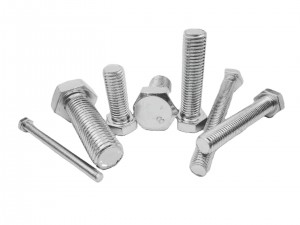What are high-strength bolts?
Bolts made of high-strength steel or requiring significant preload can be referred to as high-strength bolts. High dispatch screws are commonly used for connecting bridges, steel rails, high-voltage and ultra-high voltage equipment. The fracture of this type of bolt is mostly brittle. High strength screws applied to ultra-high pressure equipment require significant prestressing to ensure the sealing of the container.
The difference between high-strength bolts and ordinary bolts:
1. Differences in raw materials
High strength bolts are made of high-strength materials. The screws, nuts, and washers of high-strength bolts are all made of high-strength steel, commonly used in 45 # steel, 40 boron steel, and 20 manganese steel. Ordinary bolts are generally made of ordinary carbon structural steel without heat treatment.
2. Differences in strength levels
The use of high-strength bolts is becoming increasingly widespread, with two strength levels commonly used: 8.8s and 10.9s, with 10.9 being the majority. The strength level of ordinary bolts should be lower, generally 4.4, 4.8, 5.6, and 8.8 levels.
3. Differences in force characteristics
Ordinary bolt connections rely on the shear resistance of the bolt rod and the pressure bearing capacity of the hole wall to transmit shear force, while high-strength bolts not only have high material strength, but also apply a large pre tension force to the bolts, causing controlled pressure between the connecting components, and thus creating a large frictional force perpendicular to the screw direction.
4. Differences in Use
The bolted connections of the main components of building structures are generally made with high-strength bolts. Ordinary bolts can be reused, while high-strength bolts cannot be reused. High strength bolts are generally used for permanent connections.
Post time: Jun-26-2023

